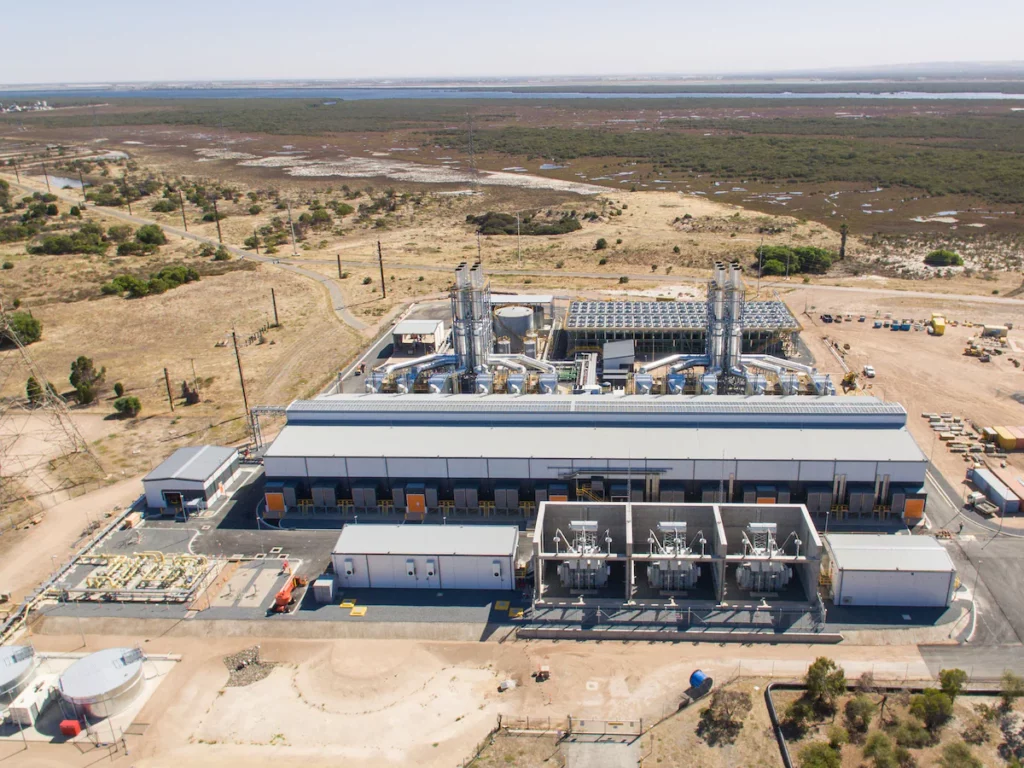System Operation and Maintenance is a multidisciplinary field focused on effective operation, repair, and upgradation of system elements. This involves the provision of user-level support, preventive maintenance for ensuring continual operation, and making necessary modifications to keep the system up-to-date. Furthermore, this process includes performance tracking, logistics support, and disposal of unwarranted system components. Essentially, it is aimed at improving system efficiency, sustainability, and longevity.
Table of Contents
- Understanding System Operation and Maintenance
- System Operation
- System Maintenance
- Logistics Support
- System Disposal
- The Role of Concept of Operations (CONOPs)
- Informing Operational and Maintenance Requirements for Effective and Safe Asset Delivery
- Case Study: AGL, Leading the Transition to Renewable Energy Systems in Australia
- Frequently Asked Questions
Understanding System Operation and Maintenance
System Operation and Maintenance, as a segment of system engineering, plays a crucial role in enhancing the lifespan as well as the performance of a system. Let’s delve deeper into its primary functions and activities.
System Operation
System operation primarily involves managing all aspects required for the system to function sustainably and efficiently.
User-Level Support
Within system operation, providing comprehensive user-level support is paramount. This involves addressing user queries, managing system usage, and troubleshooting on-the-spot complications that may arise during the operation. Additionally, experts in the field also communicate essential points of information, changes in procedure, or new capabilities to the users.
Preventive Maintenance
To ensure the smooth operation of the system, preventive maintenance is essential. It involves a routine plan that encompasses inspection, detection, and correction of any failures before they occur or develop into major defects. Its primary objectives are minimising the likelihood of failures, keeping the system in operable condition, and increasing its efficiency.
System Maintenance
System maintenance encompasses numerous activities required to rectify any issues within the system, enhancing its functionality and extending its lifespan.
System Repairs
System maintenance activity addresses repairs to the system. This could range from minor fixes to major repairs that might be needed due to system failures. For smooth operation and to reduce downtime, it’s crucial to always have an effective strategy in place for swift maintenance and repairs.
System Upgrades
With technological advancements, system upgrades become necessary. Upgrades involve updating or replacing system components to improve efficiency, add new features, or accommodate changes in the environment. They can lead to better system performance, help maintain interoperability with other systems or meet increased demand.
Performance Tracking
A central part of system maintenance encompasses performance tracking. This involves continually monitoring the system’s operation to verify if it meets the pre-determined performance parameters or not. Any discrepancies can then be addressed promptly, ensuring the system operates optimally, and potential issues are rectified before turning into costlier problems.
Logistics Support
Apart from system operation and maintenance, logistics support forms an integral part of the process. This refers to supplying the necessary equipment, technical assistance, and training to system users.
Equipment Support
Equipment support involves delivering, positioning, and maintaining the equipment needed for the system to function effectively.
Technical Assistance
Providing technical assistance includes offering advice, analysis, troubleshooting, and other forms of assistance to users operating the system.
Training
Offering dedicated training to users ensures they possess the know-how to operate the system successfully and provides them with the skill set to troubleshoot minor issues, increasing system efficiency.
System Disposal
The final aspect is system disposal, which commences when a system has completed its lifecycle. This includes decommissioning of the system, dismantling components, and ensuring safe disposal or recycling.
The Role of Concept of Operations (CONOPs)
A Concept of Operations (CONOPs) document plays a vital role in both project management and operational planning by offering a detailed account of the operational scenarios, systems, processes, and personnel involved in achieving mission or project objectives. Its value spans multiple facets of an organization’s strategic and operational endeavors. Here’s a detailed exploration of the value a CONOPs document brings to projects and operations:
Strategic Alignment and Vision Clarity
- Establishes a Shared Understanding: By clearly outlining the intended operations, CONOPs ensure that all stakeholders have a common understanding of the project’s goals, the operational context, and the expected outcomes. This shared vision aids in aligning the project with organizational goals.
- Guides Strategic Decision-Making: CONOPs provide a basis for making informed decisions that align with the operational strategy and long-term objectives, ensuring resources are allocated efficiently.
Operational Planning and Efficiency
- Enhances Operational Planning: It lays down a framework for operational processes, helping in the detailed planning of resources, timelines, and responsibilities. This clarity improves operational efficiency and effectiveness.
- Facilitates Resource Optimization: By defining the operational needs accurately, CONOPs enable better estimation and allocation of resources, preventing both resource surplus and shortages.
Risk Management
- Identifies Risks and Mitigation Strategies: CONOPs contribute to the identification of potential operational risks and the development of mitigation strategies, significantly reducing project delays and cost overruns.
Communication and Coordination
- Improves Communication Among Stakeholders: The process of developing a CONOPs fosters communication among different stakeholders, bringing attention to diverse perspectives and insights that enhance project outcomes.
- Enhances Coordination and Integration: By detailing the roles and responsibilities of all involved units and systems, CONOPs facilitate better coordination and integration of efforts, which is crucial for complex projects involving multiple stakeholders.
System Design and Development
- Informs System Requirements: A clear CONOPs can guide the development of system requirements, ensuring that the design and development phase focuses on delivering functionalities that meet operational needs.
- Supports Testing and Evaluation: The document can serve as a reference point during system testing and evaluation, ensuring that the systems developed align with operational concepts and can perform as intended in the operational environment.
Training and Readiness
- Guides Training Programs: By outlining operational scenarios and required actions, CONOPs can inform the development of training programs that prepare personnel for their roles, enhancing operational readiness.
- Supports Simulation and Exercises: The scenarios detailed in CONOPs can be utilized to develop simulations and exercises, providing a realistic training environment that enhances skill development and operational preparedness.
Continuous Improvement
- Basis for Lessons Learned and Adaptation: Post-operation analysis against the CONOPs provides valuable insights into what worked well and what didn’t, guiding continuous improvement in both operational strategies and system functionalities.
The value of a CONOPs document extends far beyond its role as a planning tool. It is integral to aligning project and operational efforts with strategic objectives, enhancing efficiency, managing risks, facilitating communication and coordination, informing system development, supporting training, and fostering continuous improvement. Ultimately, a well-crafted CONOPs can be a significant determinant of the success and sustainability of operations and projects.
Informing Operational and Maintenance Requirements for Effective and Safe Asset Delivery
The execution of comprehensive assessments plays a pivotal role in forming the backbone of operational and maintenance (O&M) strategies, thereby ensuring the delivery of safe and effective assets. These assessments, conducted at various stages of asset life-cycle, include but are not limited to risk analyses, condition monitoring, performance evaluations, and compliance checks. Here, we delve into how these assessments inform O&M requirements, illustrating their significance in establishing a robust framework for asset management.
The Role of Assessments
- Facilitating Proactive Maintenance Planning: Through condition assessments and predictive analytics, organizations can anticipate maintenance needs before issues manifest into critical problems. This proactive approach permits the scheduling of maintenance activities during non-peak periods, thereby minimizing operational disruptions and extending the asset’s useful life.
- Enhancing Asset Safety and Compliance: Safety assessments and compliance audits are crucial for identifying potential hazards and ensuring that assets meet regulatory standards. These evaluations inform the development of maintenance routines that address safety-critical elements, thus safeguarding both personnel and equipment.
- Optimizing Operational Efficiency: Performance assessments offer insights into how well an asset is operating against its intended parameters. By analyzing these data points, maintenance strategies can be refined to address inefficiencies, reduce energy consumption, and lower operational costs.
- Risk Management: Risk assessments enable organizations to prioritize maintenance activities based on potential impacts on safety, environment, and business continuity. This strategic approach ensures that resources are allocated effectively, focusing on reducing high-risk scenarios first.
Integrating Assessments into Operational and Maintenance Strategies
To fully leverage the insights gleaned from assessments, it’s essential for organizations to integrate these findings into their O&M planning processes. This integration involves:
- Developing a Centralized Database: Collecting and storing assessment data in a centralized system enhances accessibility and analysis capabilities. This database serves as a knowledge base for informing maintenance decisions and operational improvements.
- Regular Review and Adaptation: O&M strategies should be dynamic, adapting to new information from ongoing assessments. Regular review meetings can facilitate the incorporation of assessment findings, enabling continuous refinement of maintenance practices.
- Cross-Functional Collaboration: Effective asset management requires collaboration across multiple functions including engineering, operations, safety, and compliance. By involving diverse perspectives in the analysis of assessment data, comprehensive and holistic O&M strategies can be developed.
- Training and Empowerment: Equipping maintenance and operational teams with knowledge and tools to understand assessment findings empowers them to make informed decisions on the ground. Training programs should highlight the importance of assessments in shaping safe and efficient maintenance practices.
Assessments are integral to crafting operational and maintenance requirements that ensure the safe and effective delivery of assets. Using a systems approach, assessments provide a data-driven foundation for proactive planning, safety enhancement, operational efficiency, and risk management. By embedding assessments into the O&M framework, organizations can achieve higher reliability, compliance, and optimal asset performance, ultimately contributing to sustainable business operations.
| Activity | Specific Activities | Value to Project/Operational Outcome |
|---|---|---|
| Preventive Maintenance Schedule | List of routine checks on critical components; Frequency recommendations. | Minimizes unexpected failures, prolongs asset life, optimizes resource use. |
| Predictive Maintenance Techniques | Implementing vibration analysis, thermal imaging, etc. | Foresees potential failures, allowing proactive maintenance, reducing downtime. |
| Condition-Based Maintenance | Utilization of sensors and AI for real-time monitoring. | Ensures maintenance is only performed when necessary, increasing efficiency. |
| User-Level Support Enhancements | Building a knowledge base; Regular training sessions. | Improves user satisfaction, reduces support tickets, fosters self-sufficiency. |
| System Repairs and Upgrades | Guides for upgrade assessment and implementation; Emergency repair protocols. | Keeps system at technological forefront, ensures quick recovery from failures. |
| Performance Tracking | Implementation of advanced analytics; Establishing feedback loops. | Identifies areas for improvement, enhances system reliability and user experience. |
| Logistics and Equipment Support | Advanced inventory management; Strong supplier relationships. | Ensures availability of critical parts, reduces lead times, improves repair speed. |
| Safe System Disposal | Practices for eco-friendly disposal; Secure data erasure guidelines. | Reduces environmental impact, ensures compliance and data security. |
In conclusion, to ensure the sustainable operation and longevity of a system, it’s vital to maintain effective system operation and maintenance policies. Not only does this maximise overall reliability and reduce costs associated with major system breakdowns, but it also influences optimum efficiency and productivity. Hence, being trained in this domain opens up lucrative opportunities in an ever-evolving technological world.

Case Study: AGL, Leading the Transition to Renewable Energy Systems in Australia
AGL Energy, an Australian energy company operating in electricity and gas markets, has led the transition to renewable energy in Australia, impressing with its commitment to system operation and maintenance. It showcases a clear demonstration of how system operation and maintenance play vital roles in successful project implementation, especially in technologically advanced markets like renewable energy.
AGL’s approach to managing the Barker Inlet Power Station in South Australia offers a model example. It has replaced the ageing Torrens Island Power Station (TIPS) turbines with 12 reciprocating engine units, enhancing efficiency and reducing greenhouse gas emissions by approximately 35%.
Implementation
The challenge was to ensure the new equipment’s seamless integration without affecting the existing power grid. This required comprehensive user-level support and expert preventive maintenance approaches for the new turbines during the transition phase. AGL deployed a team of experts and provided rigorous training to ensure a smooth transition.
Maintenance
Maintaining the new turbines also posed substantial challenges, as they were more technologically advanced than the ones used previously. AGL, again, proved adept by setting up a meticulous preventive maintenance plan. This plan involved regular system inspections, performance monitoring, and prompt repairs or replacements to nip any complications in the bud.
System Upgrade and Performance Tracking
Over time, the need for system upgrades became apparent as the renewable energy market evolved. AGL equipped its turbines with state-of-the-art upgrades, which helped better cater to changing energy demands and environmental norms. Meanwhile, efficient performance tracking enabled AGL to ensure the system’s optimal performance continually.
Overcoming Challenges
The biggest challenges involved logistics support, considering the massive scale of equipment involved. AGL’s proactive and strategically planned logistics support system managed to fulfil these requirements deftly. Safe and compliant system disposal was also a challenge, solved by adhering to stringent environmental norms and professional assistance in decommissioning.
AGL Energy’s expert implementation of system operation and maintenance has not only enhanced the efficiency and lifespan of the Barker Inlet Power Station but also contributed positively to Australia’s efforts in transitioning to renewable energy. The case serves to illustrate the kind of informed decision-making and effective planning required to successfully manage such large-scale projects.
Frequently Asked Questions
1. What is the purpose of system operation and maintenance?
System Operation and Maintenance serves to maximise system efficiency, ensure smooth functioning, minimise down time, and extend the overall lifespan of a system. It primarily involves user support, preventive maintenance, system repairs, upgrades, performance tracking, logistics support, and system disposal.
2. How does preventive maintenance enhance system operation?
Preventive maintenance plays a crucial role in ensuring smooth system operation by proactively identifying potential issues before they escalate into major problems. Regular inspections and corrections help to avoid system failures, increase the system’s efficiency and longevity, thus contributing to cost-saving in the long run.
3. What role does user-level support play in system operation and maintenance?
User-level support is vital in system operation as it involves troubleshooting complications, guiding the system’s users, and providing necessary information about changes or updates in the system’s operations. In essence, user-level support bolsters effective system functioning, contributing to system reliability and user satisfaction.
4. Why are system upgrades necessary?
With rapid technological advancements, system upgrades become essential to keep the system on par with industry standards. Upgrades not only improve system efficiency and add new features but also help to maintain interoperability with other systems, meet an increased demand, or accommodate environmental changes.
5. How is system disposal accomplished?
System disposal is the final phase which initiates once a system has completed its life cycle. This involves decommissioning of the system, dismantling components, recycling reusable parts, and disposing of the non-reusables in an environmentally responsible manner.







